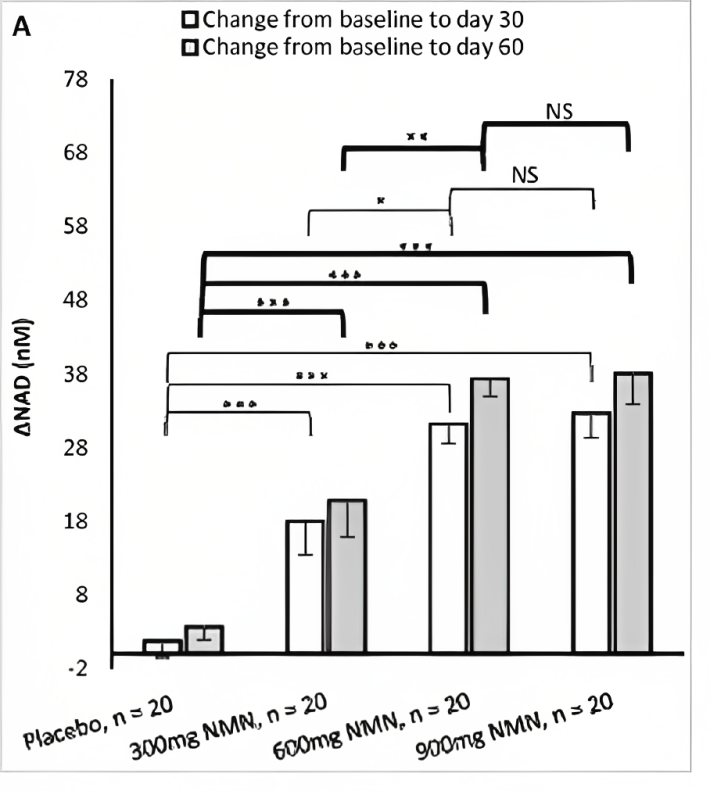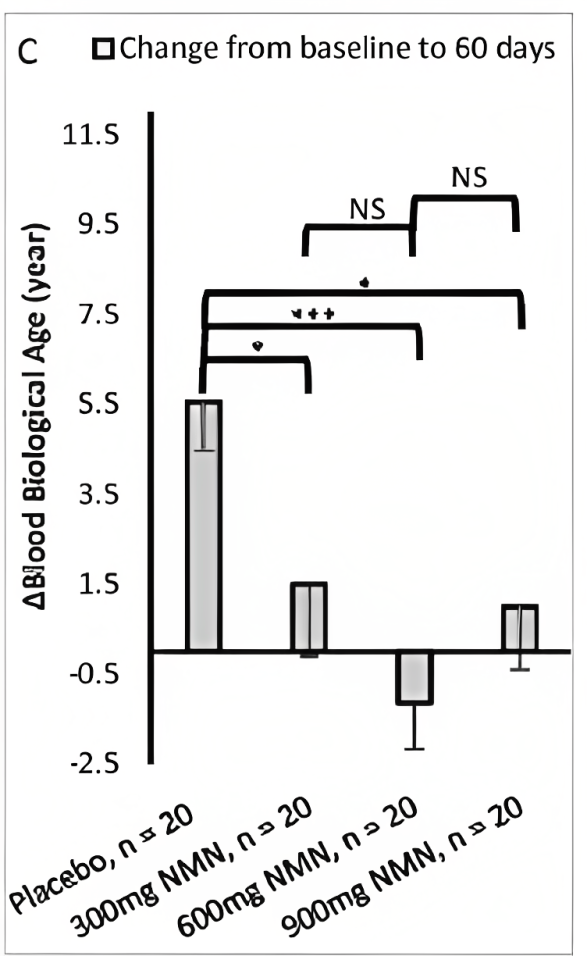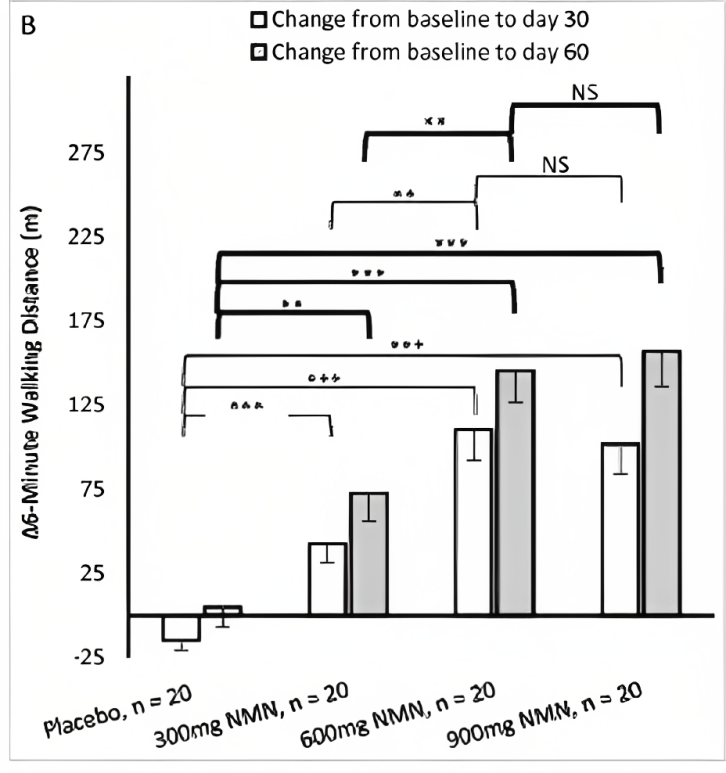Is Life Extension Expert Dr. Peter Attia Right About the Approach to an NMN Study Needing Improvement?
Peter Attia, M.D. claims the methods used in a recent NMM clinical trial showing improvements in biological age and physical performance are flawed.
Highlights:
- Attia has no gripes about the study in question’s results showing NMN elevates NAD+ levels.
- He says the method used to measure biological age is not reliable.
- The physical performance assessment doesn’t actually measure physical performance and has no clinical significance, says Attia.
Licensed physician Peter Attia is the author of the #1 New York Times Bestseller, Outlive: The Science and Art of Longevity. He also hosts a podcast called The Drive, where he discusses health, longevity, and medicine. Additionally, Attia is the founder of Early Medical, a program designed for individuals to increase their lifespan.
On June 3rd of 2023, Attia published an article entitled, Separating substance from nonsense in a study on NMN supplements. In the article, he critiques the results of a clinical trial published in Geroscience. In the clinical trial, Yi and colleagues measured the effects of different doses of NMN on blood NAD+ levels, biological age, and exercise performance in middle-aged adults.
NMN Boosts Blood NAD+ Levels
Attia has no complaints about the increase in blood NAD+ levels shown 30 and 60 days following intake of 300, 600, or 900 mg of NMN supplementation. Interestingly, blood NAD+ levels plateau with 600 mg of NMN and 900 mg does not lead to further increases. While these results are sound, Attia points out that blood NAD+ does not mean intracellular NAD+ and summarizes his overall critique of the rest of the study:
“Despite this single promising result, once we start to look at the findings on biological aging and exercise performance, this study seems to be yet another game of smoke and mirrors.”

Bogus Biological Age Measurements?
As one of their assessments of NMN’s effects, Yi and colleagues measured biological age — considered our “actual” age, apart from our chronological age — the number of years we’ve been alive. There are several ways of measuring biological age, which is where Dr. Attia sees the problem.
In the study, the researchers used a biological age calculator called Aging.AI 3.0, where biological age is estimated based on clinical laboratory test parameters, including glucose, cholesterol, and sodium levels in the blood. However, Attia says, “there is little evidence to support the accuracy, validity, or reliability of this method.”
Attia goes on to say that 60 days of NMN supplementation is not long enough to see meaningful aging changes, yet the results show that the biological age of the placebo group increased by about 5.6 years. He wonders how this could be possible in a non-treatment control group and says the data demonstrates how Aging.AI 3.0 cannot provide a reliable assessment of biological age.

(Yi et al., 2023 | Geroscience) NMN Lowers Biological Age?
Pondering the Physical Performance Assessment
To assess physical performance, Yi and colleagues measured the distance participants could walk in six minutes. However, Attia says this test is generally used to measure exercise tolerance — the ability of older individuals or patients with serious medical conditions to walk for six minutes without experiencing difficulty or stopping.
He says that since the participants of the study were healthy middle-aged adults, they should be able to walk for six minutes without problems. For this reason, the distance walked will simply reflect each person’s pace of walking or even just their stride length. Thus, Attia says that this is hardly a measurement of physical performance and adds,
“There’s no disputing that there was a statistically significant difference between those who received NMN supplementation vs. those who did not. But healthy 50-year-olds – whether taking NMN or not – should have no difficulty in completing a 6-minute walk without tiring, so this test offers no insight into energy, endurance, or any other metric of physical fitness. In other words, Yi et al.’s results have no clinical significance.”

Other Studies Showing NMN Improves Physical Performance
It should be pointed out that when the measurements used in a study are not ideal, it doesn’t mean the results are false. It just means that the results are questionable, which is why having multiple studies with similar results is important for believing those results. If multiple human studies show that NMN improves physical performance using the appropriate measurements, we may have enough evidence to believe that NMN improves physical performance.
That being said, at least three other studies have assessed the effects of NMN on human physical performance. Kim and colleagues showed that NMN taken in the afternoon reduces the time it takes to sit down and stand up from a chair 5 times (5-times sit to stand) by about 1 second, while a placebo taken in the afternoon reduces this time by about half of a second.
Liao and colleagues showed that NMN increased oxygen volume consumed (VO2) by up to 0.3 L/min in young and middle-aged adults, indicating improved oxygen uptake, which can enhance performance with endurance exercises, such as jogging. Igarashi and colleagues showed that NMN increased gait speed by about 0.3 m/s in older adults. They also showed that left-, but not right-hand grip strength was increased by 0.2 kg, suggesting improved physical performance.
While these studies show small effects, it may be due to the small number of participants, with each study having less than 30 individuals per NMN treatment group. Also, the studies did not show positive results for the same measurements. Thus, larger studies that repeat these measurements will provide more evidence to conclude that NMN improves physical performance.

